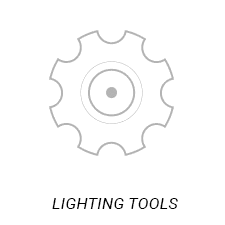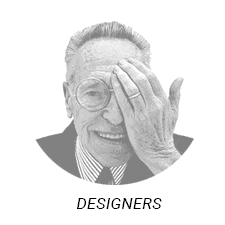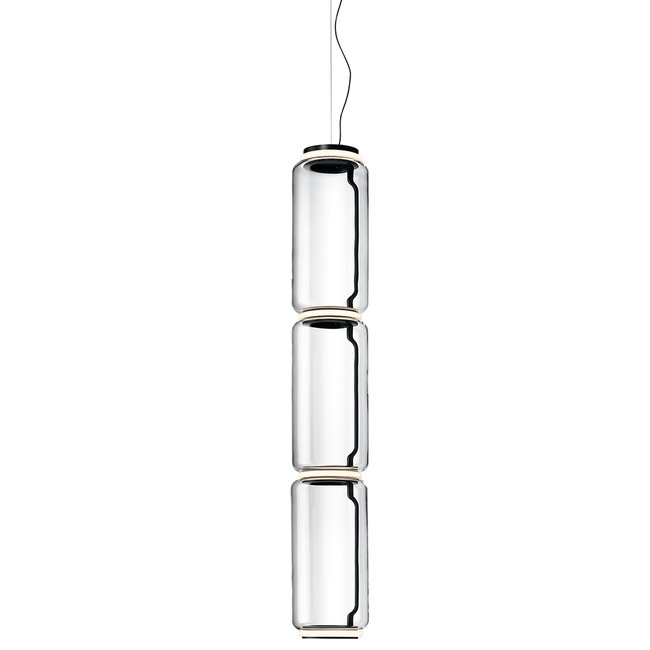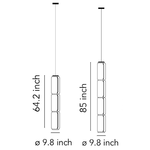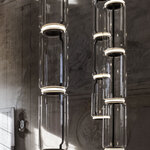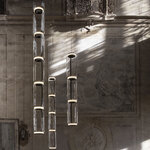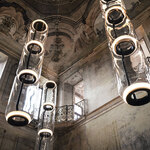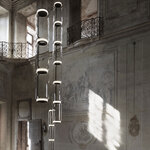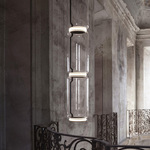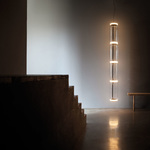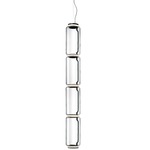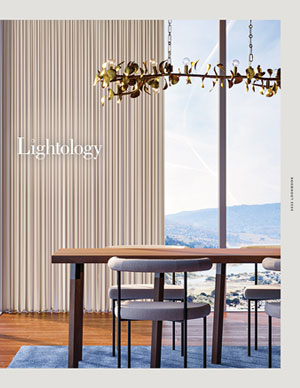Noctambule High Cylinder Pendant
By Konstantin Grcic, for FLOS
Noctambule High Cylinder Pendant
By Konstantin Grcic, For FLOS
$6,498.25 - $8,300.25
Height:
64.2”
- Manufacturer Stock: 1
Usually leaves warehouse in 3-5 business days
Based upon stock availability.
$6,498.25
Was $7,645.00 | You Save $1,146.75 (15%)
+ FREE SHIPPING
SPEC #: FLO861451 | ID: FU026400
Explore this product in 3D
Noctambule High Cylinder Pendant
SPEC #: FLO861451
ID: FU026400
Designed by Konstantin GrcicRead Bio
The Noctambule High Cylinder Pendant offers a striking, innovative lighting design that is composed of a vertical arrangement of Clear crystal blown glass cylinders. With discrete LED technology, light is emitted at the top and bottom of each cylinder. UL and cUL listed.
Available Options
Specifications
- Finish: Black
- Color: Clear
- Size: 9.8"W x 64.2"H
- Cord Length: 157.48"
-
Dimmer:
0-10VMust supply 2 extra wires from dimmer to power supply in canopy
- Materials: Crystal, Die Cast Aluminum
- Lamp Source: LED
-
Bulb:1 x LED/36W/120V LEDIntegrated LED module
- Total Wattage: 36 watts
- Lamp Color: 2700K
- Color Rendering: 90 CRI
- Delivered Lumens: 3960 lumens
- Lumens/Watt: 110.00
- Country of Origin: Italy

UL
Specification Sheet / Technical Files
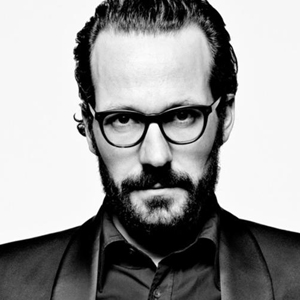
About Konstantin Grcic
Konstantin Grcic is a German industrial designer known for creating mass-manufactured items, such as furniture and household products. He has participated in leading design shows and his work can be seen in major museums. Described as having a pared down aesthetic, his functional designs are characterized by geometric shapes and unexpected angles.
Grcic studied cabinetry making in the Arts and Crafts tradition at the John Makepeace School for Craftsmen in Wood in London, starting in 1985. In 1988, he began his graduate studies in Industrial Design at London's Royal College of Art. Grcic worked with British designer Jasper Morrison in the late 1980s until 1990, when he began designing furniture for SCP, one of London's largest design stores. He credits his time in London for helping develop his individual style.
In 1991, Grcic founded his studio, Konstantin Grcic Industrial Design (KGID), in Munich, Germany. Working with a staff of five, he creates pieces that have been described as both revolutionary and intelligent.
With an emphasis on usability, Grcic is known for having a spartan approach to design, relying on geometric forms, unusual angles and hard edges. He has created installations and developed products such as furniture, lighting, watches, tableware, espresso makers, and even umbrellas. Grcic became recognized for his 1995 Refolo trolley, 1997 Wanda dish rack, 1998 award-winning Mayday lamp, 1999 ES shelf and 2001 Chaos chair.
His iconic 2004 Chair One and 2006 Miura stool are both described as being comfortable to sit on, despite their oddly shaped compositions. Grcic has a philosophical approach to design, especially when it comes to seating products, his favorite objects to tackle.
Grcic has used cutting edge technology, such as high-tech ceramics and 3D modeling software, to create his mass-produced items. Advanced engineering plastics were the basis of his award-winning Myto Chair, launched at the Milan Furniture Fair in 2008. Grcic also relies on low-tech solutions to advance the design process, manually creating and deconstructing rough paper models. An engineering-oriented approach and extensive research make up his methodology, something attributed to his upbringing.
Shop This Designer
FLOS was founded in 1962. The very same year FLOS lighting began producing a number of lamps that were to become classics in Italian industrial design. From the very outset, FLOS has been distinguished by its high quality approach to lamp design and production. Many of the numerous lamps designed for FLOS are undoubtedly some of the best-known and most successful products of industrial design. They have won awards and historical-critical accolades, and are included in all the most important collections and design museums around the world.Some significant product examples over the last forty years are: Parentesi (1970), Brera (1992), Fucsia (1996), Rosy Angelis (1994), the Romeo Moon (1996), Archimoon (1998) series and the recent Diabolo (1998). Throughout the nineties the work of Achille Castiglioni and Philippe Starck has been flanked by a series of products from new and other designers. This reflects a desire to keep the attitude to discover the most talented designers to maintain FLOS leadership in innovation.
Explore FLOSOptions
Reviews
No Reviews


